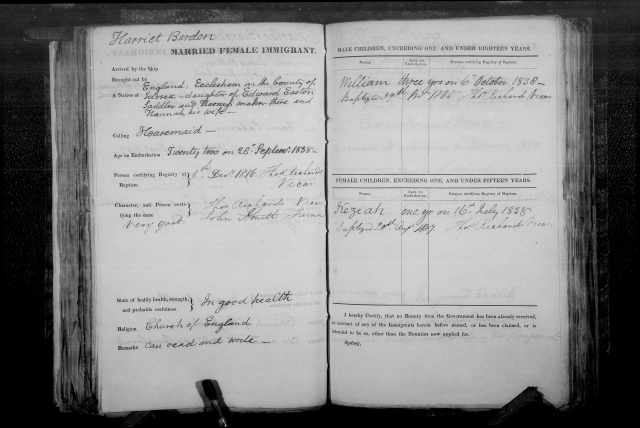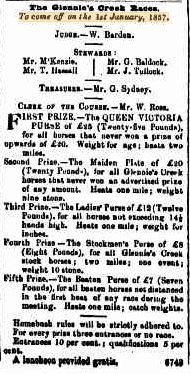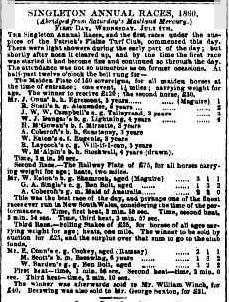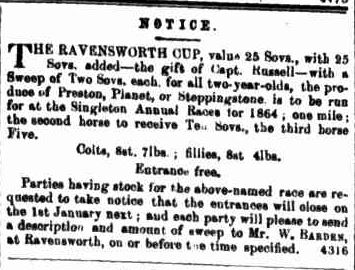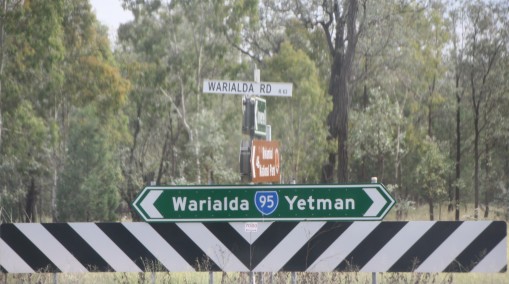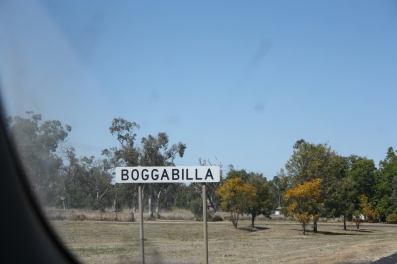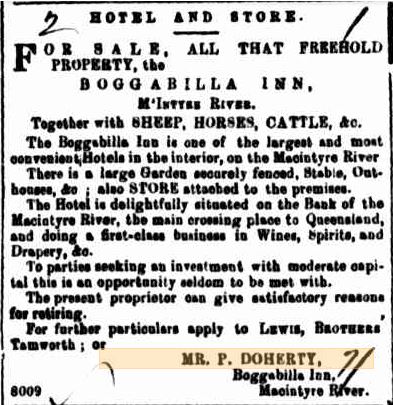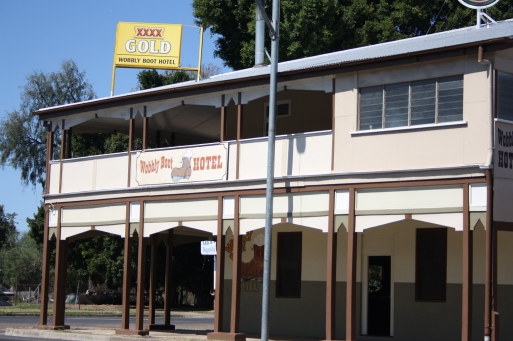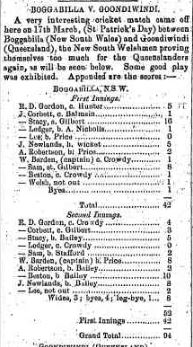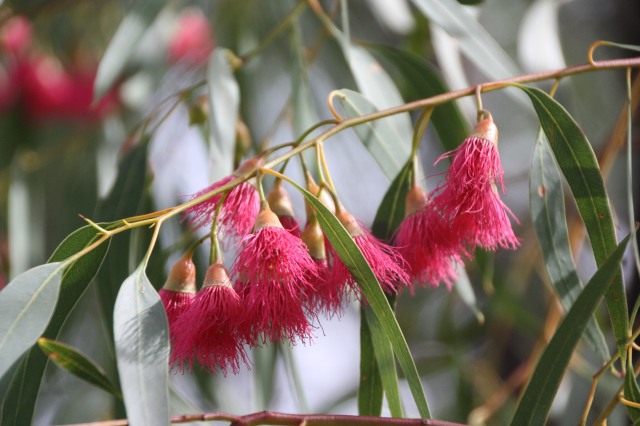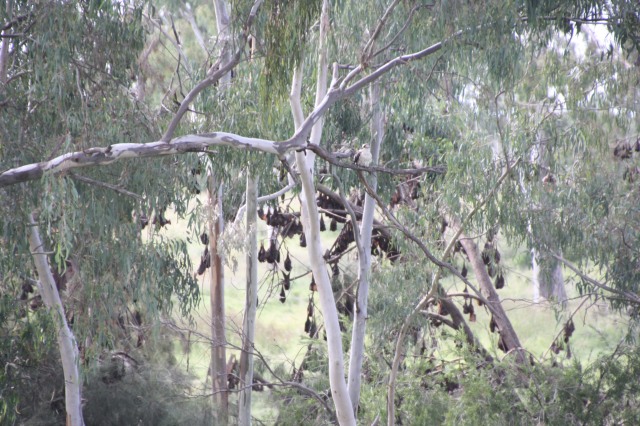OUR BARDEN FAMILY IN AUSTRALIA TRILOGY – PART ONE
After attending a virtual NSW ACT Family History Societies conference, organised by the Newcastle and Maitland Family History Societies in September 2022, I was inspired to re-look at my Hunter Valley ancestral origins. These include people from the Barden, Tulloch, McCosker, Power, Byrne, Watson Waters, MacDonald, Weatherstone, Dogherty/Dougherty, Robinson, Callcott, Avard and Daley families. I started with the Barden line, and was fortunate to find many, many references to our earliest Barden in the Hunter Valley, viz William Charles “Billy” Barden in Trove. Sometimes he was known as Bill or Old Mr Bill or Billy.
Introduction
It had not been my intention to write an extensive biography of my great great grandfather William Charles Barden, as initially I planned to only prepare some research notes on his years in the NSW Hunter Valley in the mid 1800’s. It’s often said in family history circles that if family stories are not shared and passed down, then within three generations that they can be lost. Sad, but true. In some ways, our digital era, including the National Library of Australia’s digitising of local newspapers through Trove, has wound back some of these losses, enabling some information to be found, if not the very personal stories. Fortunately there are many mentions of William Barden in Trove, over 150, at least. Often these are brief – snippets and advertisements, occasionally more detailed Court reports. There was no mention of William interacting with bushrangers, especially considering that William was located in the 1860’s where the bushranger Captain Thunderbolt, Frank Wordsworth Ward, roamed from the Hunter Valley up to Queensland. Today it’s known as Thunderbolt’s Way. Nevertheless, as I began to dig through these, I became entranced by the compelling stories that emerged, in particular William’s passion for horses, and cricket. To me, William’s story quickly became a saga that needed to be told. So where to begin?
Emglish born William Charles Barden (1835 Icklesham Sussex – 1893 Yetman), iniitially lived in Sydney and Liverpool also possibly Camden before becoming the first of our direct line of Barden’s to reside in the Hunter region. William had arrived at Patricks Plains – Singleton, by the mid 1850’s and remained there until at least 1866. By 1869 William had moved his family to Yetman, then onto Warialda, and by the 1870’s he was further north in Boggabilla on the NSW side of the Macintyre River, opposite Goondiwindi on the Queensland side.
And then in 1893 William tragically drowned in the flooding of the Macintyre River near Bumble Creek, Yetman, a little short of six decades of life lived. Initially I had believed that William had been a Pound Keeper, but as I delved deeper into his story, I found that he had far more occupations and that his was a life truly lived. Perhaps his life might have seemed overshadowed by the success of his son, the champion jockey James William Belmore Barden, and to a lesser extent his older son Charles William Barden. Sadly William’s premature death in 1893, meant that he did not live to see the success of his son James William Belmore Barden as both jockey and race horse trainer – 1, 2, 3, 4, 5, 6, 7, 8,
William’s Story
At the time of William’s relatively humble birth in October 1835 in Icklesham Sussex England, who could have imagined that he would become the Overseer and Stock Superintendent of the 12,000 acre Ravensworth property and Manager of Goorangoola in the Patricks Plains (Singleton area), Publican of the Boggabilla Inn and the Old Yetman Hotel, then only later, not long before his passing, a Pound Keeper of Bumble Park, Yetman? Arguably he could be considered a father of Colonial European Boggabilla on the mighty Macintyre River, along the border between NSW and Queensland.
Icklesham Sussex England – The Early Years
William’s parents Charles Barden and Harriett Easton had married in May 1835, a little over three months before William’s birth in October 1835 Icklesham Sussex England. Subsequently he was baptised in November 1835 – see below. Also it is likely that the reference to nearby Winchelsea was for his father Charles Barden’s birthplace.
William’s birth in 1835 was a time of great upheaval in Sussex with the impacts of the Enclosures Act, Settlement Act and Poor Law Act, which had led to the Swing Riots and burning of property, crops and machines, especially in Sussex. Some were especially violent, the Swing Rioters, were hung and others transported to Van Diemans Land, political convicts in reality. Subsequently, there was quite an outcry which led to the various Assisted Emigration Schemes established in the Southern English Counties to the NSW Colony. They would no longer be a financial burden on their local Parishes, and they escaped the prospect of life in Workhouses. These schemes also operated in Ireland and Scotland.
We visited Icklesham in 2019 and below some photographs from our trip:

Formerly All Saints and now St Nicholas Icklesham – with its tall Norman tower, it is believed to date from the 12th Century. Apparently it was altered in the Victorian era. Perhaps this is where William was baptised in November 1835?
Emigration of the Barden Families
Over those turbulent years of the 1830’s-1840’s, various Barden families sailed from Sussex for the NSW Colony. Another Barden family researcher Peter Noone had wondered if these various Barden families were related? Only with DNA testing and digitised family resources has it been possible to confirm that they were all related – 1, .
And so Charles and Harriett Barden also made the fateful decision to emigrate to Australia. William then only a three year old, and his sister Kezia, barely a year old, sailed in 1838 with their parents on the James Pattison, as Assisted Immigrants.
From Wikipedia: “The James Pattison was a merchant sailing ship built in 1828 upon the River Thames, England. She made one voyage for the British East India Company (EIC), and two transportingconvicts to New South Wales. She also made several voyages carrying immigrants. She burnt to the waterline after her cargo ignited en route from Sydney to England in 1840.” The James Pattison was from the era of sail, a sailing ship of about 500 tons burthen with Captain James Cromarty. (note – Chromarty features in my Robinson family – Captin William Chromarty brother of James). There would be many changes in transport in William Barden’s lifetime. Sailing ships would be overtaken by steam ships and then iron ships. Also later in life, William would also see the extension of the steam railway from Maitland to Singleton including Camberwell (Ravensworth) in the Hunter Valley NSW from 1858 – 1863. However the railways did not reach Moree until 1897, four years after his death in 1893.
The Sydney – Liverpool – Camden Years
Initially the immigrant Barden family settled around Sydney and then later in the Liverpool area. William’s sister Hannah Barden was born in Sydney in 1840 and sadly died there that same year. Another sister Eliza Barden was born in Rose Bay Sydney in 1841, and lived. William’s youngest sister Caroline was born in Liverpool in 1843 and tragically also died there in 1843. Of the five Barden siblings, only Kezia, William and Eliza would see adulthood and raise families.
William’s father, Charles Barden, died c.1851, possibly off Sydney Heads but the precise place and manner of his passing has been subject of conjecture, as records can no longer be found. Unfortunately, the year 1851 was prior to mandatory civil registration of births, deaths and marriage introduced in NSW in 1855. Coincidentally a Trooper Charles Barton died in accident about in 1852 in Carcoar and some thought that he might be William’s father, however from reviewing those details, it was not the case – Trove 1, 2.
However there must have been no question that William’s father had died c.1851,and not simply vanished, as his mother Harriet Barden nee Easton was able to remarry by special license in 1853 to James Fraser. Thus Harriett was not forced to wait for seven years, eg if Charles deserted her for instance, as was the case for some other women of the 19th Century.
For the remaining half century of her long life, William’s mother Harriett lived in the Camden area, passing away there in the succeeding century in 1904. William’s two sisters, Kezia Fletcher and Eliza Dowle, both lived in Camden for many years and Barden family lore says that their mother Harriett was a Nurse on the Macarthur estate at Camden, which is quite feasible.
But what of William Barden between his father’s death c.1851 till the mid 1850’s? William would have been only 16 years old at the time of his father’s passing – certainly old enough to be employed, and if not before, almost certainly working after his father’s death. Had William lived in the Camden area with his mother and sisters, and if so could he have been employed on the Macarthur Estates if his mother was working there? And could he have begun to develop his considerable horsemanship skills there? When did William strike out for the Hunter Valley? Had he only been at Patricks Plains or elsewhere in the Hunter beforehand? Had he worked his way up at Ravensworth to become the Superintendent of Stock?
The Ravensworth-Cheshunt Years
There were a number of large acreage estates at Patricks Plains by the 1850’s. Following Commissioner Bigge’s report of the 1820’s which saw the recall of Governor Lachlan Macquarie, it was no longer easy for emancipated convicts to gain small acreage holdings. Instead Bigge’s report recommended that land be made available as large acreages to (mainly) men with capital and means behind them. People such as these were often disdainful of the Lower Orders, Convicts, Emancipists and Assisted Immigrants, who would then be employed by these men of means on their large acreage estates, even after the Robinsons Land Reform Act of 1862.
Ravensworth was one such property of over 12,000 acres that had once been owned by the Bowman family of Mary (Maria) Bowman nee Macarthur from the 1840’s. Hard times and poor business strategies, coupled with the death of Bowman, saw Ravensworth sold off and ultimately acquired by Captain William Lloyd Russell, a former military man. He had been part of the 28th Regiment, which had made a significant impact on the Colony and it seems we have them to thank for the Australian Jockey Club [AJC] which was founded from race meetings they organised from 1840, the AJC is officially recognised as being established in January 1842- Family History Society of Singleton.
In 1843 Russell was living at Maryville in the Parish of Ravensworth, and in 1845 at the Glenridding Estate, when he acquired part of that estate. Then in 1848 he acquired both the Cheshunt Park and Ravensworth Estates, followed by Eeara, Tucka Tucka, Blue Nobby and Wallangra further north in the Gwydir. However by 1861 Tucka Tucka had been sold off, and then Cheshunt Park in 1869. Russell seems to have been an astute businessman and investor, more so than his predecessor Bowman.
Captain William Lloyd Russell was a very busy man, especially politically – the first Member of the Legislative Assembly for Patricks Plains 1859-1860 and later a Member of the Legislative Council for 1861 – 1865. He was also a noted wner of race horses, and supporter of horse racing on Patricks Plains prior to his 1866 passing in England – 1, 2, 3, 4, . Some sources do confuse him with the nearby Mr Bourne Russell who had represented the NSW Parliament Northumberland Boroughs – see NSW Parliament record – especially as both men had been in the NSW Parliament, but in different seats.
By 1857 and aged only 21 years, William had begun to become an established figure in the Patricks Plains area in the Hunter Valley – viz Glennies Creek, and also later at the Ravensworth and Cheshunt Park properties.
Note – a Charles Barden from another branch of the Barden family had also come to the Hunter region, which does provide some confusion to be worked through.
William had been a Judge at the Glennies Creek Races in the Hunter Valley for 1857. Was this the start of the Barden family’s involvement with horse racing? Or had it begun some time earlier?
Several years later by 1858, and aged 23 years, William organised the employment of Colt-Breakers for Ravensworth under James E Davys who acted as Russell’s overall agent. – Trove.
In 1859, less exciting than participating in the local horse racing scene, William dealt with a missing horse from the area of Doughboy Hollow – Trove
At the Singleton Races in 1860 William seems to have had a share in horse named “Ben Bolt” – Trove
In February 1861, William issued a challenge for his horse, Ben Bolt to race over six hurdles and then in May 1861 he entered another horse Merton Maid in the Singleton Annual Races – 1, 2
In September 1861 William Barden married Ann Margaret Tulloch, daughter of immigrants James Haldon Tulloch, a Local Poundkeeper, and wife Helen Anderson who arrived early in 1839 on the Earl Durham. William gave his occupation as Overseer at the time – Trove. The syndicated notification of their marriage continued in various newspapers until November 1861. The marriage was witnessed by Ann’s brother, James Alexander Tulloch, whose son James Younie Tulloch would go on to found the famed Tulloch Wines. The marriage was conducted by the Reverend James S White, the minister of St Andrews Presbyterian Church Singleton, which dated from 1837. He was at the church for 55 years from 1847 to 1901 – source St. Andrew’s Church, Singleton : centenary, 1837-1937
Decades later in 1935 it was written in the Singleton Argus: “A marriage which created quite a lot of local interest in the long ago was that of Mr Charles Barden, of Ravensworth, to Miss Annie Margaret Tulloch, second daughter of Mr James Tulloch, of Red Post Hill. The Rev. Dr. White performed the ceremony, which took place on September 11th, 1861.” -albeit that William was mistakenly called Charles in the press.

Rev W Spence of the Uniting Church wrote in 1937 of the Church of Singleton in the 19th Century: “The settlements were few and far between, while the methods of travelling were very primitive compared with the facilities at our command at the present day. These were the days of bridgeless rivers and creeks, and of almost roadless areas of country. All travelling had to be done on horse-back, and often under circumstances of great difficulty, not unattended by danger to life and limb. ”
In June 1862 the birth of William and Annie’s first child was born, a son Charles William Barden, my great grandfather.
And in 1862 William was reported as Superintendent of Stock at Captain William Russell’s at Ravensworth. Several days after the birth of son Charles, was apparently at the Singleton race course and observed an assault, later giving evidence in the case in July 1862. The defendant was found guilty, sentenced to 7 days and fined 2 shillings – Trove.
Next up in July 1862, William began to organise the 1863 Ravensworth Cup – Trove.
There was a missing horse in 1862 (Trove) and a court case about stolen cattle belonging to Captain Russell in August 1862, where William Barden was described as Superintendent at Ravensworth – Trove.
The court case was continued in September 1862, when McManus and Boland were found guilty, then sentenced to three years imprisonment with hard labour with McManus sent to Darlinghurst Gaol and Boland to Parramatta Gaol. The third accused, Brady, was set free – Trove.
Meanwhile, William’s capabilities in dealing with valuable imported horses must have become apparent. Several were advertised to stand at Cheshunt Park, Camberwell under his management in September 1862 – as well as several other imported horses to stand at Ravensworth. However William was not mentioned in regard to those at Ravensworth – Trove.
Stepping Stone, Purston and Planet are mentioned in C Bruce Lowe’s book, “Horsemen of the First Frontier(1788 – 1900)” and also by the Singleton Family History Society article.
The above advertisement continued through to the end of December 1862, along with an additional advertisement – Trove.
The 1864 annual Ravensworth Cup was advertised in April 1863 by then Honorary Secretary, William Barden, Buckle Bone, and entries included William’s Ben Bolt b.c. Stepping Stone; dam Mirtle; along with other horses sired by Purston and Stepping Stone – Trove. I had wondered if this was our William Barden. But then it was apparent that William may have spent time up at Buckle Bone nee WeeWaa – Trove.
An extensive coverage of the 1864 Singleton Cup was later reported in the Maitland Mercury and Hunter River Advertiser on September 3 1864, including William Barden’s Ben Bolt and P McCosker’s Butcher Boy – Trove. William’s eldest son Charles William Barden was to marry Mary Jane McCosker, of the Irish Catholic McCosker immigrant clan.
Meanwhile in 1864, a William Barden Esq.had impounded several horses at Carroll Keepit – however this may be another William Barden, as it was well north of the Hunter – Trove
Another child was born to William and Annie Margaret in May 1866, a daughter, Adelaide Victoria Barden, at Glennies Creek Camberwell – the second of their children in the Hunter Valley.
Beyond Ravensworth-Cheshunt
It seemed that by October 1866, William had moved on from Captain William Russell’s Ravensworth and Cheshunt properties, when he was Manager at Goorangoola and Rouchell Runs – Trove. He seems to have been at Goorangoola till early 1867 at least.
Perhap it was the August 1866 passing of Captain Russell in England (Trove) that ultimately led to William moving on? Apparently Russell’s family had plans to sell the estate which by then reputedly consisterd of 40,000 acres of freehold land and 63,000 acres of leased land. It comprised about 19,000 well-bred sheep, 5,000 of which were lambing, 4,300 highly-bred cattle, 160 horses and stores and working plant. The property also boasted 100 miles of post and rail fencing, enclosing 30 paddocks, a post office and pound and the Ravensworth homestead. As Superintendent of Stock on the Estate, William would have had considerable responsibilities.
Only William’s eldest son Charles William and eldest daughter Adelaide Victoria had lived in the Hunter Valley – would they even remember their early years in the Hunter Valley?
Interestingly, research has been done on Captain William Russell by the Singleton Family History Society – no mention of our William Barden – only that George Wyndham of winemaking fame was manager of Ravensworth in 1866. – “George Wyndham was a Manager at Ravensworth first known reference in 1866 and last 1871,”
In September 1868, donations were being collected for the Alfred Hospital, and William donated, along with many others. At that time he was listed as being at Tucca Tucca Yetman, Warialda, which was then owned by the Dight Brothers. – Trove.
A second daughter was born in May 1869, Harriet Ellen Barden, at Tucka Tucka – Trove. This property has been variously described as being on the Liverpool Plains, at Yetman Warialda. And the Barden’s were still there in January 1870, when 30 Hereford Bulls were offered for sale – Trove.
The Publican Years in Boggabilla
So far I have not been able to find electoral roll records for William Barden in any of the likely localities in 1870 – 1871, although I did find some for the McCosker’s and a Power in Patricks Plains, Singleton for that year.
Early in 1871, he was reported as having a horse Tim Whiffler in the Goondiwindi Christmas Races – Trove, and later that year Jonas and Fireaway (Trove), . 1871 – Birth of son James William Belmore Barden at Boggabilla and was reared on a property managed by William Barden – Trove.
1870 – 1876 – William Barden had the Boggabilla Inn – which was operating by at least 1866, when it was for sale in 1868 there was a detailed description of not only a building, but a garden, stable, outhouses and a store selling wines, spirits and drapery, horses, sheep and cattle.
I’ve wondered if William still had the Boggabilla Inn, after 1875-1876, possibly so from mentions in stories about his son James William Belmore Barden, ie describing his first race as an eight year old.
Today the Boggabilla Hotel is known as the Wobbly Boot, though this is not the original Boggabilla Inn, which had burned down.
In 1873, a man named George Preston was charged with stealing a horse owned by William Barden of Boggabilla – Trove.
Perhaps it is not surprising that William was listed as having a horse entered for the annual 1870 Yetman New Year Races conducted in the wet and mud? However the wet conditions prevented the planned cricket match from being played Trove .
Later in June 1874, William’s horses possibly by Faug a Ballagh – 1, and Purston, as well Emperor, and a horse from Splinter Bar, were entered in the 1874 Goondiwindi Races – see a report that Faug a Bellagh had bolted – Trove. Faug a Ballagh had been well known Irish bred horses in the 1850’s – with an extensive pedigree. Fortunately the weather was kinder on this occasion, than previously and cricket was played between Goondiwindi and Boggabilla after the races. William was well down the batting order for Boggabilla, and not out in either of the two innings. Trove
There was an occasion in 1875 when William Bardenactually found himself on the wrong side of the law, when he was fined 5 Pounds in Goondiwindi for wearing a Queenland policeman’s uniform. He claimed that he had obtained it from a “blackfellow” – Trove
A third daughter was born in 1875, Ann Margaret Barden, in Boggabilla.
In 1876 the United Border Jockey Club was formed with its first race held on May 11 and May 12, and of course William had entered a horse, Roetry(?)
William Barden captained the winning Boggabilla cricket side, including my maternal relative J Newlands, against the Goondiwindi team in 1876 – Trove. And he still captained the Boggabilla side in 1879 – Trove.
1876 – William selected land – probably at Boggabilla
1877 – William had purchased 640 acres at Boggabilla, Warialda, Staplyton, NSW – see page 1077 of Government Gazette
1878 – William Barden and wife Annie Margaret Tulloch had success at the Macintyre Agricultural and Pastoral Show in Goondiwindi with his cow and her pumpkins – and success again at the 1881 Show – Trove.
Yetman and Boggabilla
1882 – William Barden had the Old Yetman Hotel, built in 1866, which became part of today’s Codfish Hotel – Wikipedia

Image Source – Mattinbgn, CC BY-SA 3.0 <https://creativecommons.org/licenses/by-sa/3.0>, via Wikimedia Commons
Coincidentally 1882 was also the year that eldest son Charles William Barden married Mary Jane McCosker, daughter of Thomas McCosker and Sarah Power at St Francis Xaviers Narrabri NSW – note possibly the wedding was registered in Warialda – (see McCosker web page & Tribal Pages) .
1884 – William Barden’s Colonial Wine Licence at Merriwa McIntyre River was cancelled due to his having abandoned the premises – Trove
1884 – the NSW Government Gazette notified the brand marking for William Barden’s sheep at Merriwah Warialda – and likewise in 1886 – Trove.
Another of William Barden’s horses was believed to have been stolen from Yetman by a jockey in 1886 – Trove and was later found – Trove
William’s wife Ann Margaret Barden nee Tulloch had died of a sarcoma in Prince Alfred Hospital, Camperdown on September 2nd 1887, aged only 46 years. She had spent 145 days in the hospital – leaving their five children, aged from only 11 years to 24 years. I have wondered at the support Ann must have had from husband William, to have her treated down there in Sydney, so far from her family, and for so long, and then transported to Singleton to be buried. and . …for more details on Tulloch’s see Tulloch Family tree.
William’s daughter Helen Harriett Barden obtained about 500 acres of land at Arrawatta Yetman Warialda in 1889, having sought it in 1887 – Trove. In 1885 at aged just 16 years, she had earlier sought 295 acres at Yetman, and it was recorded in 1892, but was later in 1892 it was forfeited – Trove. Apparently back then it was quite legitimate for a father to seek land for an underage child, as I discovered in a 2022 State Records of NSW webinar. Clearly William was quite ambitious in channelling his children in regard to seeking land acquisitions.
1893 – January 13 – the NSW Government Gazette notification – several lots of land at the Merriwah Station, Boggabilla, Warialda District were transferred between Barden & Avery and William Barden & Charles William Barden. As Charles and Avery were later in business presumably Barden & Avery received the properties. Shortly before his June 1893 death William Barden, Poundkeeper at Yetman notified via the NSW Government Gazette that he had impounded a bullock.
Barden Family Tragedy in the Macintyre River at Yetman June 26 1893
My great great grandfather William Charles Barden and his daughter Adelaide Victoria Hartley nee Barden lived at Bumble Park near Yetman in the 1890’s. From mid June 1893 there had been concern at likely flooding of the Macintyre River in the Yetman area (1, 2) . In late June 1893, William Charles Barden drowned in the Macintyre River at the Bumble Park area near Yetman, where he had been the local Poundkeeper.
The photographs of Yetman that follow are from our 2017 trip up to Goondiwindi.

Richard Coventry Bridge, 12 metres high, above the Macintyre River at Yetman April 21 2017 – no sign of flooding today
Drowned in the McIntyre. – The Telegraph Brisbane – July 18 1893
“Information was brought into Goondiwindi on June 29 (says the McIntyre Herald) by Mr. Sutton, the Yetman mailman, of the death- by drowning of Mr. William Barden. The deceased was known to have left Yetman on Monday Evening. He had to cross the river near Holdfast. He was riding and leading another horse. The first thing known afterwards was the discovery of the horses on Wednesday in a bend of the river not much frequented. The horses having been tracked to where they had emerged from the river, search was commenced for the body, which was found on Wednesday evening.” – see also Brisbane Courier report of July 17 1893.
According to his death certificate, William Charles Barden was buried on June 29 1893 in the Church of England Cemetery in Yetman, as notified by his daughter Adelaide Victoria Hartley nee Barden. William’s wife Ann Margaret Barden nee Tulloch had been buried on September 4 1887 at the Presbyterian Cemetery in Singleton. He left a modest estate valued at just 60 pounds, dwarfed by the 10,000 pounds estate left by his younger son James William Belmore Barden.
Of Ticks, Vegies and Billy Barden in 1898 – five years after his passing …
Back when there was a fear of ticks getting into NSW across the Macintyre from Queensland … a tale mentioned in the Barden family
Thus the ” Intercolonial Courier,” New South Wales: “John Chinaman does not take kindly to the greasing of his horses at the-border town of Gooondiwindi. Our Celestial cabbage-growers, it says, do a good trade at Boggabilla, and judge Ah Fat’s astonishment, when, attempting to cross the bridge on Saturday with a cartload of vegetables, he was peremptorily ordered back, with, ‘Grease your horse, John. John wasn’t ‘having any’ at first but eventually consented to make a virtue of necessity, and sent his understrapper for a tin of fat and some kerosene. Without properly mixing the two, he dabbed some on the forehead of the horse and on each knee. “A1 lite now,’ and wanted to start but no.
After a wrangle, the Chow, seizing the pot, gave a few desperate dabs about the horse, and again they essayed to start. But still the inspector was not satisfied! Exasperated beyond measure, the Celestials poured out the vials of their wrath, which would scare even Sydney Smith to at once repealing hls idiotic regulation, and turned home disgusted, muttering things about the ‘inspector.’ And the Boggabilla housewife is still without her vegetables.
No wonder “John” bucked! No man likes to have his horses converted into a slush-pit. And, in any case, the thing’s idiotic. O, “Boggabilla housewife!”. Why can’t the Boggábllla house-man grow his own vegetables, anyhow? Billy Barden used to do it in the old days there, years ago; and then have lots of time.to play cricket, in top-boots and shout for both teams.” There was no bridge over the McIntyre then, ticks were an unknown quantity along the border. Chows scarce, and money plentiful in Goondiwindi.”
As the first bridge over the Macintyre at Goondiwindi was built in 1878, the “old days” in the above story must have been earlier in the 1870’s when Billy Barden was still playing cricket with the Boggabilla side and also was mine host at the Boggabilla Inn?

Queensland State Library – Floodwaters rush under the MacIntyre River Bridge, Goondiwindi, 1921. This MacIntyre River bridge was the second one to span the river at Goondiwindi. It was erected in 1914 and replaced a timber structure which served the border river crossing from 1878 until 1914.
Obituary?
As an obituary has not been yet located for William “Billy” Barden (1835 – 1893), this page might constitute a tribute to the man called “Old Mr Bill“, by the local Chinese market gardeners in Goondiwindi”, according to Barden family lore. It’s also believed that he had “ideas for making Boggabilla into a premier town at a proposed end of the railway,” later championed by his eldest son Charles William Barden.
Children and Grandchildren of William Barden and Annie Margaret Tulloch
- Charles William Barden (1862 – 1931) married Mary Jane McCosker (1865 – 1913) , daughter of Thomas McCosker (son of Bernard McCusker & Ellen McIllina who arrived from Ireland in under the British Government Immigration Assistance Scheme rather than the Bounty Scheme System. Mary Jane‘s mother was Sarah McCosker nee Power, daughter of Convict Thomas Power and Jane Byrnes, who arrived as a Bounty System Immigrant from Ireland with her parents Daniel Patrick and Julia Byrnes). (Note – Jane Byrnes’ brother Patrick married Ellen McCosker, a daughter of Bernard McCusker and Ellen McIllina). For more details on McCosker, Byrnes and Power families see the extensive McCosker Family Tree on Tribal Pages.
- William Bill Thomas Barden – Draper, Salesman (1885-1973
- Charles Patrick Barden – Jockey, Horse Trainer (1887 – 1938) – lived in Perth
- Percival James Barden – Storekeeper, Farmer, WWI Veteran – (1888 – 1945)
- Ivy Ann Barden (1890 – 1945) – married Christopher William Collins – Shearer (1888-1944)
- Cyril Bernard Barden (1892 – 1962) – Shearer, Labourer, Horse Breaker, Boxer, Footballer, WWI Veteran, Grazier, also served in WW2 in Boggabilla
- Lyla Jane Barden (1894 – 1919)
- Bertha Rose Barden (1896 – 1901)
- Leonard Hilton Barden, Telegraph Linesman – Labourer – Share farmer WWI Veteran (1899 – 1948)
- Beryl Margaret Barden (1902 – 1971) – married Louis Lewis, Carrier (1897 – 1960)
- Adelaide Victoria Barden (1866 – 1940) – married William T T Hartley, Carrier – Mail Contractor (1861 – 1929)
- Arthur Charles Hartley (1885 – 1917)
- James Hartley (1888 – 1888)
- Helen Ann Hartley (1889 – 1981)
- James William Hartley (1890 – 1975)
- Clarice Adelaide Hartley (1893 – 1981)
- Stanley Norman Hartley (1895 – 1941)
- Clifton Belmore Hartley (1898 – 1898)
- Clement Alfred Hartley (1900 – 1952)
- George Hartley (1902 – 1902)
- Lionel Davis Hartley (1908 – 1991)
- Harriet Ellen/Helen Barden (1869 – 1957) – married Alfred Hartley, Carrier (1863 Tamworth- 1944 Moree)
- Alfred James Hartley (1890 – 1977)
- William Hartley (1892 – 1965)
- Bertha Lilian Hartley (1894 – 1987)
- Gladys Ellen Hartley (1896 – 1982)
- Cecil Charles Hartley (1898 – 1975)
- Belmore Victor Hartley (1901 – 1967)
- Adelaide K Hartley (1903 – 1977)
- Clara May Hartley (1905 – 1959)
- Leonard Norman Hartley (1908 – 1984)
- Jessie V Hartley (1911 – 1982)
- James William Belmore Barden – Champion Jockey & Horse Trainer (1871 – 1931) married Mabel Wardrop (1875 – 1941)
- Hilda M Barden (1894 – )
- Laurie Steele Barden (1896 – 1962)
- James W B Barden (1897 – 1972)
- Charles Albert Barden (1899 – 1951)
- Maggie Irene Barden (1901 – 1974)
- Linda Doris Barden (1904 – 1987)
- William Adam Barden (1906 – 1962)
- Claire Adelaide Barden (1910 – )
Note – DNA matches, with many Barden and/or Tulloch descendants but not McCosker descendants, since 2017 has strongly suggested that another child was born in Sydney’s Easton Suburbs to James William Belmore Barden, and raised by the child’s maternal McClure grandparents as their own son. Consideration was also given to the potential for Charles William Barden to be the biological father, however as he was living up in the Boggabilla / Goondiwindi area, that was discarded, in favour of his brother James William Belmore Barden who lived in Sydney’s Eastern Suburbs..
- Ann Margaret Barden (1875-1887) – married Reginald Charlesworth Kirkland Electrical Engineer (1883 – 1964), separated by 1930
- George James Reginald Kirkland (1910 – 1987)
- May Kirkland ( 1913 – 1924)
- Joy(ce) Ann Emily Kirkland (1918 – 1995)
Although it was not stated anywhere, it seemed to me that to achieve what he had, that William must have had some admirable qualities – passionate about his interests – horses of course, an instinct for working with horses, cattle and sheep, likeable, can-do, dedicated, trustworthy, reliable, a good sense of humour, active in contributing to the social life of his community, an attention to detail, dependable, organised in regard to the horse races, loyalty to his employer, tolerance of the Australian climatic cycles of droughts, floods (except 1893 event) and bushfires, independence and resilience to survive the early passing of his father, as well as the 1840’s and 1890’s depressions, business acumen during his years as a publican and as estate manager, able to deal with the ups and downs of life and to start somewhere new when circumstances changed for him.
In researching William Barden, I found him emerging from the shadows, and I developed enormous admiration and respect for him. I wonder what others think?
Postcript -Ravensworth Open Cut Glencore – Coalmining Operations
There had been a controversial proposal for opencut coalmining which would involve relocation of the Ravensworth Homestead and associated buildings eg Mens Headquarters, Stables and Barn to Broke. Requiring the land for mining operations, Glencore had advertised in February 2018 for community involvement to discuss the concept of moving the buildings to another site in order to preserve their historic value.
I found various documents on this proposal interesting because there are references to the history of the Ravensworth Estate, which comprised the majority of William Barden’s known time in the Hunter Valley.
From the Singleton Argus in 2018 – “In a letter on the homestead from the OEH as part of the planning and assessment process for Glendell continuation project it states that Ravensworth Homestead is one of 19 places identified as a very early Homestead in a Heritage Council comparative study and the Heritage Council NSW has recommended it for nomination on the State Heritage Register (SHR). OEH thereby provide their advice on the basis that this place is of State significance. “The proposed relocation of state significant heritage item is not considered appropriate. The current context and setting of a heritage item, like Ravensworth Homestead, are significant values that contribute to the heritage significance of an item and their loss from a relocation is a major impact on its heritage values,” the letter states. “The proposed relocation has the potential to result in catastrophic damage to the significant fabric of Ravensworth Homestead. “Adaptive reuse of heritage items of buildings from the 1820s presents challenges and a new use can impact on the heritage values. “A homestead of the era is likely to have a significant garden with early plantings and the archaeology that will be lost as a result of the open cut mining activities.”
“In 2020 the Plains Clan of the Wonnarua People (PCWP) put in an application for the preservation and protection of a specified area described as ‘Ravensworth Estate’, and including Bowmans Creek and Glennies Creek, near Singleton“. – Singleton Argus 2021.
However the relocation was not approved and vibration from blasting operations have been required to protect the historic homestead.The Homestead, which consists of a complex of five buildings of sandstone construction, including a main house and kitchen wing, two outbuildings and an ablutions building, along with a timber cottage is listed on the Singleton Local Environment Plan as having Regional Heritage Significance – source Ravensworth Open Cut Glencore Plan for Heritage Management. It lies outside the mine project area, viz 5 kilometres away.
I found this document interesting because it covers the history of the Ravensworth Estate, which comprised the majority of William Barden’s known time in the Hunter Valley.
With the arrival of European settlers in the nineteenth century, traditional patterns of Aboriginal life were quickly and dramatically altered. Disease spread through the Aboriginal population of the Hunter Valley, and displacement from traditional lands soon followed, with European settlers taking up land first along the major river systems then spreading inland. Conflict often resulted, with warriors fighting to retain access to land and country, and Aboriginal use of resources – including hunting of settler stock – seen as theft, and quickly punished. Although not all interactions were hostile, some authors (refer to Milliss 1992) argue that there was a general hostility between the European settlers and Aboriginal people, evidenced by violent skirmishes from the earliest European settlement. There are a number of specific references to the Ravensworth area in ethno historic sources, many of which relate to violent encounters between the European settlers and the Wonnarua. Among these accounts are a series of escalating violent encounters associated with the Bowman estate, which led to the death of up to 19 Aboriginal people, colloquially known as the ‘Ravensworth massacre’
Land was first taken up in the region of the project area by Dr. James Bowman (surgeon and pastoralist) at Ravensworth in October 1824, and for one year, the Bowman estate was the northernmost settlement of the Hunter Valley – and with additional purchases his estate, Ravensworth, located between Singleton and Muswellbrook, exceeded 12,000 acres (4856 hectares)… the Ravensworth Estate was established, stocked and developed by overseers and convict labour – by 1828, over 40 convicts and overseers worked on the Ravensworth property as shepherds, labourers, carpenters, sawyers, blacksmiths and stone masons … Ravensworth Homestead (built by 1842) was the second house built on the site, with construction beginning in the late 1830s. Although some alterations have been made, namely, timber veranda posts replaced by those of cast iron and roof ventilators and the addition of several rooms, Ravensworth remains relatively intact and has escaped any significant alterations to Mary (Macarthur) and James Bowman’s mid nineteenth century design’
The Macarthurs sold the property in 1847 to Captain William Russell. Ravensworth remained in the possession of Captain William Russell and his family until 1882. Russell arrived in NSW in approximately 1837, following his retirement from his regiment, and became a pastoralist and agriculturalist. His Hunter Valley properties included Ravensworth and Glenridding near Singleton, Waverley and Chestnut Park, in addition to purchasing several blocks of land from the Crown. He is reported to have held over 30,000 acres of freehold land in the Hunter Valley.
Additional information – The Ravensworth property was used chiefly for the fattening and marketing of livestock.. The construction of the Singleton to Muswellbrook line between 1863 and 1869 included Ravensworth. Initially called “Camberwell”, Ravensworth railway station was opened on 1 June 1869.
In 1882 Duncan Forbes Mackay purchased part of the original Ravensworth estate, including the homestead. During the latter part of the nineteenth century the Mackay family became one of the principal grazing and cattle breeding families in NSW. Mackay improved the Ravensworth estate, including clearing to increase the land available for grazing, to make it a first class sheep raising property. In 1883 approximately 40 men are reported to have been employed at Ravensworth.
Further information on Ravensworth itself after 1883 can be found at Ravensworth Open Cut Glencore Plan for Heritage Management.
There was a shift from wool production in the nineteenth century as mixed farming, dairying and to a lesser degree grazing became more important in the twentieth century.
‘coal was not commercially exploited until the 1890s in the Upper Hunter’. Coal mining and electricity generation have become major industries in the Singleton area since the 1950s with the first wave of collieries built to meet export demand at Liddell, Foybrook and Liddell State. Since the mid-twentieth century, coal mining operations ‘expanded from Cessnock/Maitland area to the triangle bounded by Singleton, Muswellbrook and Denman, using highly mechanised, open cut surface mining techniques in which all overburden is stripped from the surface






